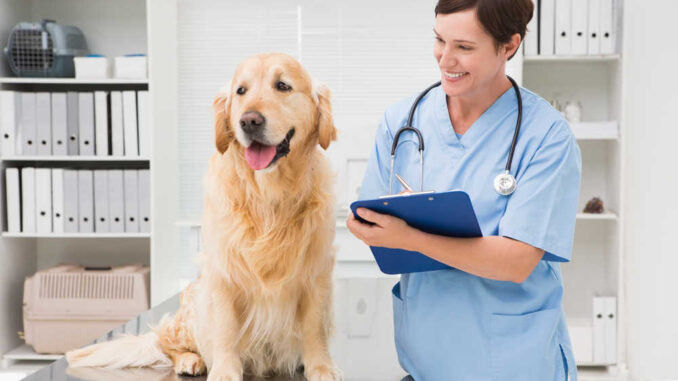
This article was updated on January 29th, 2024
A dog losing hair in patches with scabs is a problem that many owners come to see us about at the clinic. No owner wants to see their dog’s beautiful hair falling out, let alone see their dog’s skin all scabby. So what does it mean when both are happening to your dog? In this article, Dr. Alex Crow covers the most common reasons & share tips to help your dog.
Why is my dog getting scabs and losing hair?
Dr. Crow explains the likely causes:
“Dogs may sometimes scratch or lick themselves excessively when they are feeling anxious or bored. This can lead to skin problems such as scabs or hair loss. However, if boredom or anxiety are not the cause, your dog’s scabs and hair loss is likely due to an underlying medical condition such as allergies, infections, or parasites. It’s essential to seek veterinary assistance to treat these conditions as they tend to worsen over time if left untreated.”
Scabs and hair loss can be caused by a variety of conditions, ranging from minor to serious. Recognizing the difference is crucial. Let’s look at the most common conditions causing these skin issues.
Most common conditions causing both scabs & hair loss [with pictures]
1. Allergies
Dogs can also experience allergies, much like humans. In fact, about 10-20% of dogs are affected by allergies. Dogs can be allergic to something in their food (like chicken or wheat) or in the environment (like pollen or chemicals). Symptoms include skin issues such as scabs and hair loss, as show in the pictures below.
Pictures of skin issues as a result of allergies:
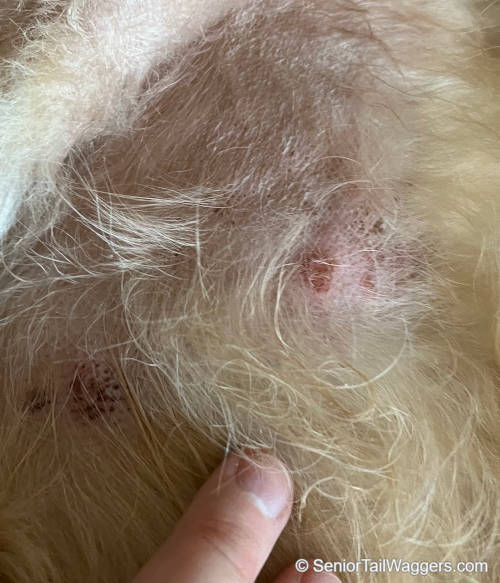
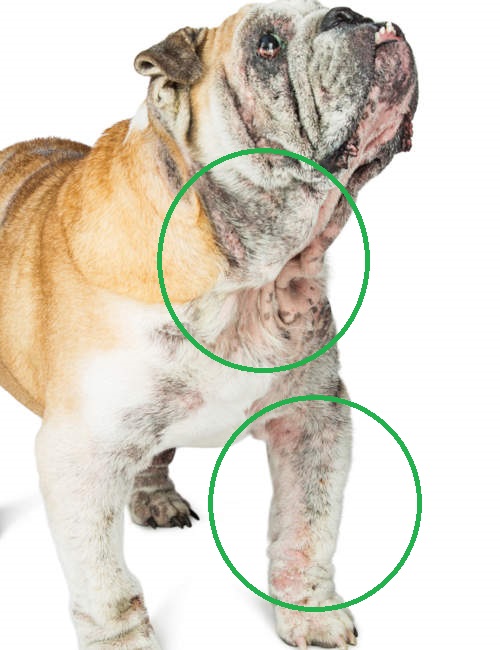
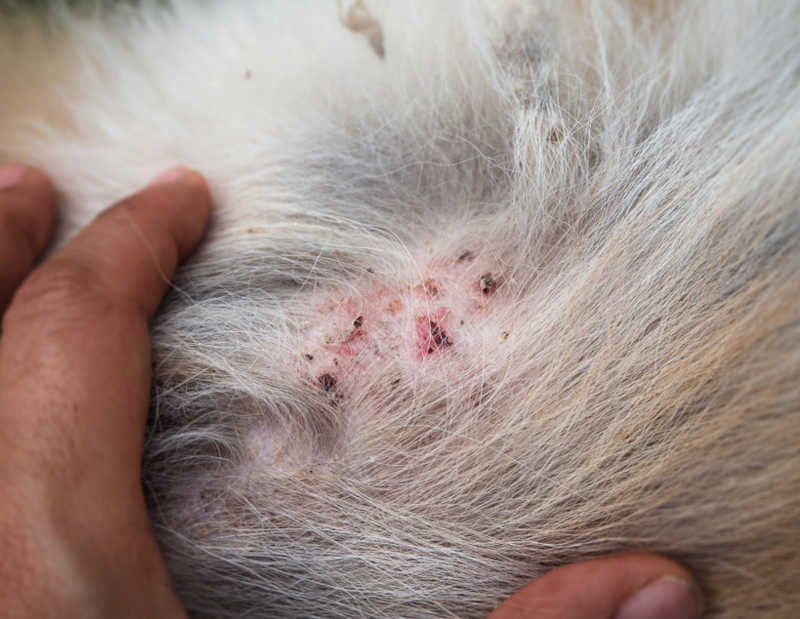
View more pictures.
How do you know if your dog has allergies? The most common symptom is itchy skin, which leads to excessive scratching, biting, or licking. Symptoms may include hair loss, scabbing and red skin, sneezing and even sometimes GI issues such as vomiting/diarrhea. Identifying the exact source of the allergy can be challenging because the symptoms are similar across allergy types. Veterinarians often need skin or blood tests to confirm the allergy.
2. Hormonal issues
Hormones are a vital part of almost all body functions. As a result, a hormonal imbalance can play havoc on your dog. Dogs with these conditions will often suffer from dry, scabby, and flakey skin or hair loss.
Pictures of hair loss and scabs as a result of hormonal issues:
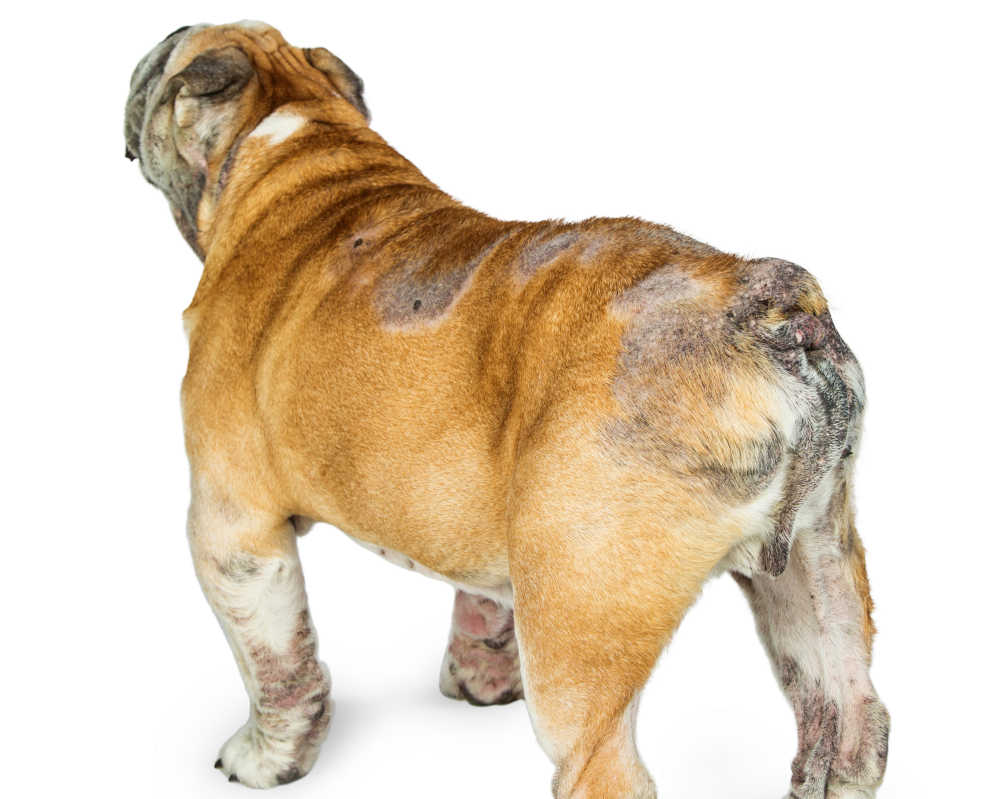

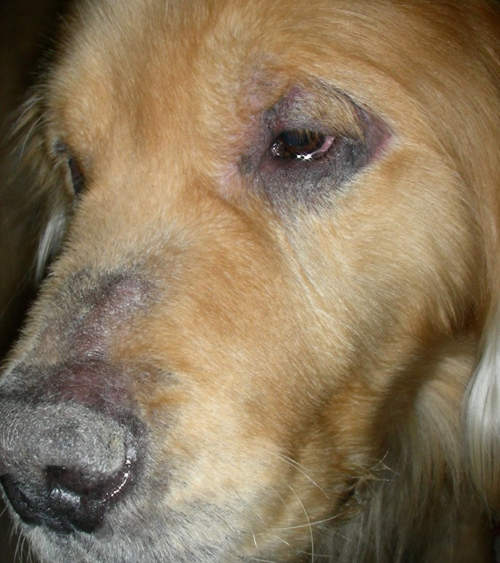
View more pictures.
How do you know if your dog has hormonal imbalances? Hormonal issues often present with other symptoms besides skin issues. For example, any of the following symptoms may be a sign of a hormonal imbalance:
- weight gain or loss,
- changes in appetite,
- excessive thirst/urination,
- lethargy, and
- behavioral changes.
A veterinarian can diagnose hormonal diseases in dogs through a physical exam and specific diagnostic tests such as blood work, urine analysis, and sometimes advanced imaging techniques.
3. Parasites (fleas and mites)
Parasites such as fleas and mites living on or within your dog’s skin can result in hair loss and scabs. These small insects feed off of your dog, damaging the skin and hair follicles in the process.
Fleas: Dogs with fleas will often scratch, bite, or lick their skin, and have tiny dark specks (flea dirt) or small, fast-moving insects in their coat. Some dogs are also allergic to flea saliva, a condition known as Flea Allergy Dermatitis (FAD), which can cause severe itching and skin irritation.
Pictures of skin issues as a result of fleas:
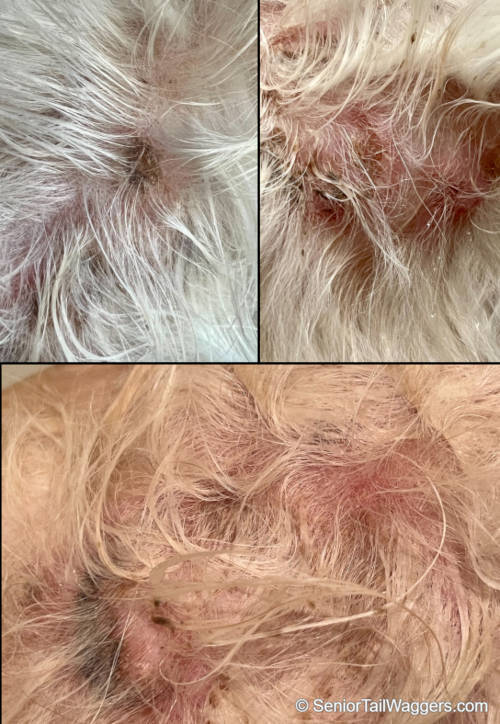
There are also various types of mites that can affect your dog’s skin including cheyletiella, demodex and sarcopes. Demodex in particular likes to reside in your dog’s hair follicles and so the damage it causes results in hair loss. Dogs with these types of parasites will typically exhibit symptoms like intense itching, hair loss, red inflamed skin, or the formation of scabs and scales, particularly around the ears, face, and limbs.
Pictures of hair loss and scabs as a result of mites:
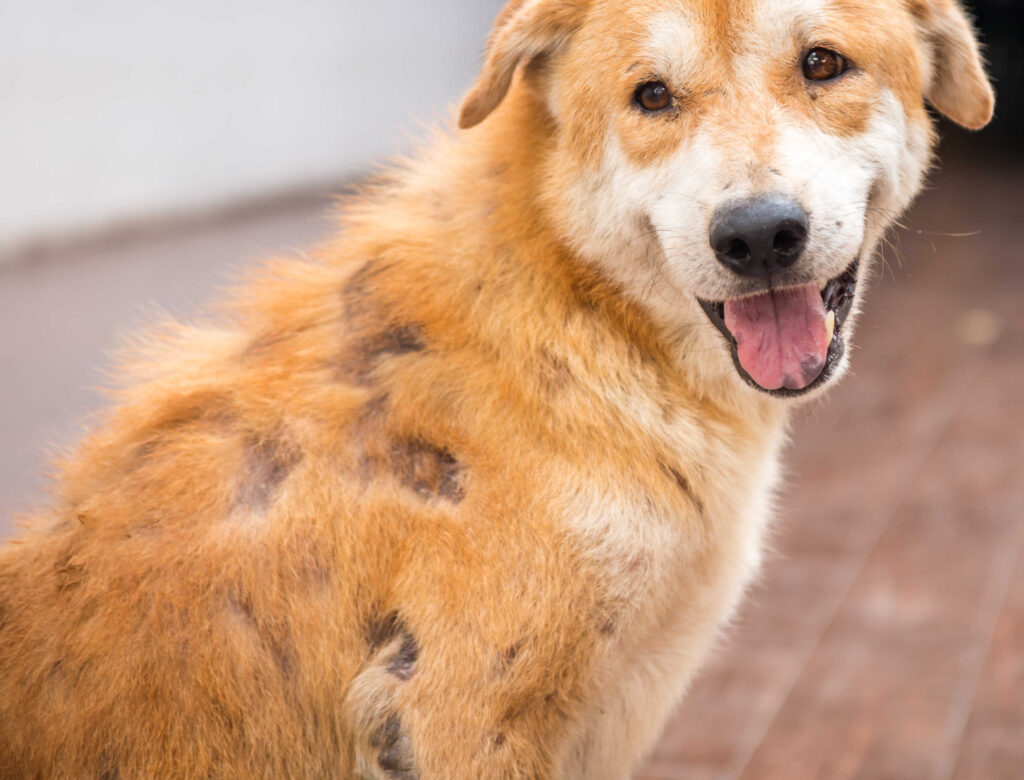
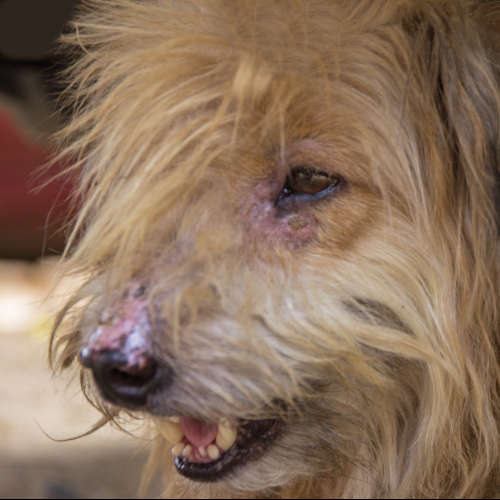
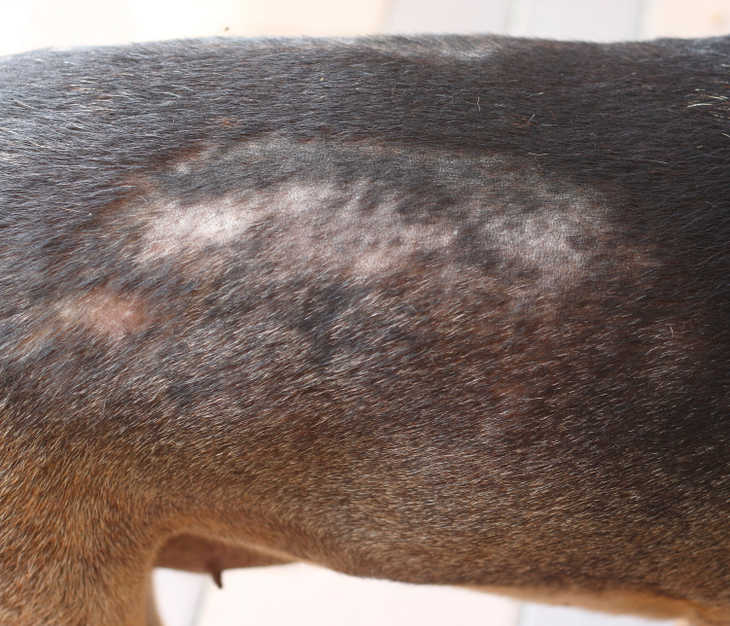
View more pictures.
Some parasites may be visible on the surface of your dog’s skin; otherwise, skin samples can be looked at under the microscope to identify these organisms.
4. Pressure sores
Pressure sores develop when friction builds up on certain areas of your dog’s body for prolonged periods of time. Excessive rubbing or pressure affects the skin’s ability to heal itself and it reacts by becoming thicker over time.
How do you know if your dog has pressure sores? Common sites for pressure sores are the elbows, chest and hocks. See example picture below:
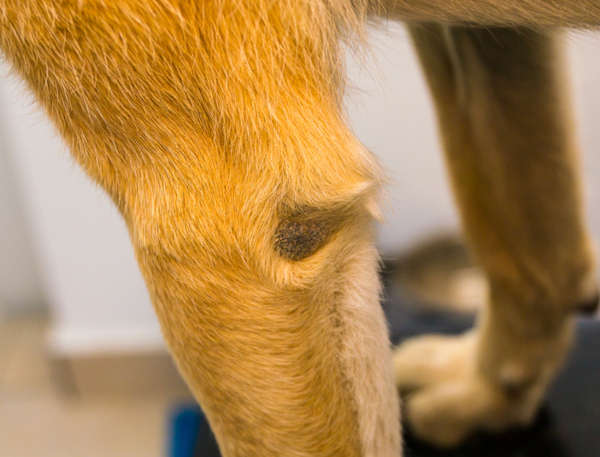
5. Ringworm infections
Ringworm, despite the misleading name, is a fungal infection of the skin that can result in circular ring-like lesions, characterized by hair loss and scabby skin.
How do you know if your dog has ringworm? A dog with ringworm infection typically displays circular patches of hair loss, often with red, scaly, or crusty skin in the affected areas, as shown in the pictures below.
Pictures of ringworm skin issues in dogs:
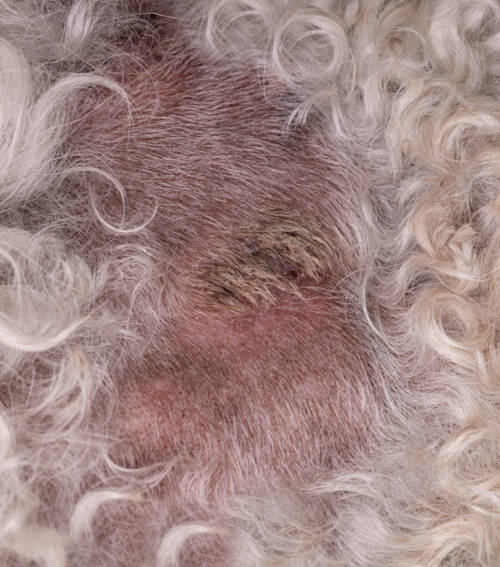

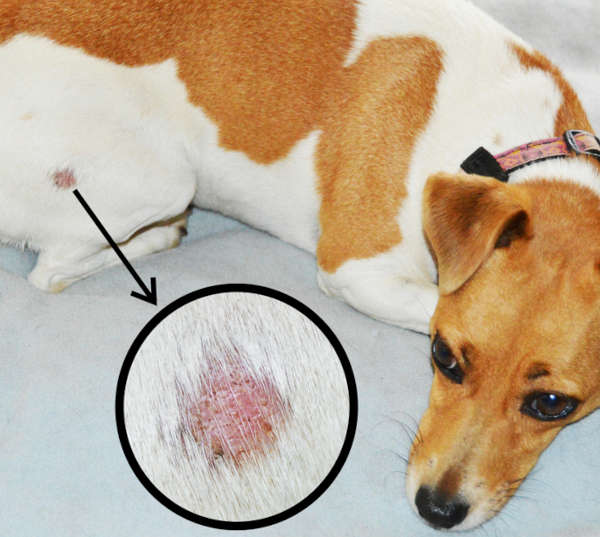
View more pictures.
Ringworm is highly contagious and can even spread to humans. If you suspect that your dog has ringworm then take them to your local vet as soon as possible. Your vet will perform tests to help confirm the diagnosis of ringworm and start your dog on a long course of anti-fungal treatment.
6. Stress/boredom
Sometimes dogs that are extremely bored or anxious will bite at their own fur, pulling it out, and damage the skin resulting in hair loss and wounded, scabby skin. This is the equivalent of ourselves biting our nails – it’s a bad habit but a hard one to break and the solution is providing your dog plenty of other stimulation so that they don’t resort to self-trauma.
Once your dog isn’t self-traumatizing then the scabs should heal within 2 weeks and the fur should be fully grown back within a few months. We recommend this article on PuppyLeaks.com: 10 Ways to Give Your Dog More Mental Stimulation.

Can I just monitor my dog and wait?
Some causes of hair loss and scabby skin are benign and may resolve over time. If you can identify the most likely cause as pressure sores and these don’t seem to be bothering your dog then it’s okay to leave them. Similarly, if you suspect your dog is bored or anxious then the fix will be to provide your dog with more stimulation.
It’s important to recognize signs that indicate it’s time to take your dog to the vet. This way, your pet can receive effective treatment before things get worse.
Signs that your dog need to see the veterinarian:
- your dog’s scabs have been progressively getting worse
- your dog’s hair loss has been progressively getting worse
- your dog is displaying other symptoms of being unwell, such as excessive thirst/urination, lethargy, pot belly or anything else that appears unusual
- your dog is repeatedly scratching
To understand when veterinary intervention is required, we also recommend reading our article about scabs: Scabs on Dogs: Our Vet Explains What to Do.
What can be done at home to help a dog with hair loss and scabs?
If the lesions don’t seem to be bothering your dog and they’re not getting dramatically worse you can consider trying the home remedies listed below. We recommend discussing these with your veterinarian first. Steps include:
1. Identify a possible underlying cause: Are the areas of skin affected where there is an area of high friction? Or is your dog anxious/bored at the moment? These are things that you may be able to resolve at home.
2. Treat your dog for fleas/mites: If your dog is not up to date with their anti-parasite treatment then give them a treatment at home. Make sure to use a veterinary prescription product. Learn more: How to Tell If your Dog Has Fleas, or Dog Mites: What They Looks Like & What to Do.
3. Improve your dog’s diet: Not all dog foods are created equal and as discussed before many dogs can have allergies to components within their food. Try switching them to a hypoallergenic diet in case allergies are to blame.
4. Apply a moisturizing lotion to the affected areas: A moisturizing cream such as vaseline or sudocrem might help keep moisture into the affected lesions and help dry scabby skin to heal.
“If home remedies don’t work within 1-2 weeks, take your dog to the vet as veterinary treatment is likely required. “
You should not delay meeting with your veterinarian if you observe that the scabs or hair loss get worse, or if your dog is showing any signs of being unwell. Early intervention is key to successful treatments.
How will your vet help
Vet Diagnosis
Following on from discussing the symptoms you’ve noticed and a thorough physical exam, a vet’s primary tool for investigating skin lesions is to take samples. These include hair plucks, skin scrapes, impression smears and culture swabs – essentially these are all ways of identifying different causes of skin disease by examining a small sample of your dog’s skin under the microscope. If your vet suspects allergies or hormonal disease then they might want to perform blood tests too.
Questions your vet might ask you
In order to get an accurate picture of the symptoms that you’ve noticed your dog displaying, your vet will ask you a range of questions. It’s therefore a good idea to have some answers to these questions in advance to save time and allow your vet to reach a diagnosis quicker. These questions include:
- What exact symptoms have you noticed your dog displaying?
- When did you first notice the scabs and/or hair loss?
- Do you think the symptoms are getting worse?
- Is your dog scratching at the lesions?
- Is your dog otherwise well in themself?
- Is your dog up to date with their anti-parasite treatment?
- Does your dog have any allergies that you’re aware of?
- What, if any, home remedies have you tried so far?
Related posts about scabs in dogs:
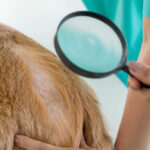 Scabs on Dogs [With Pictures]: Our Vets Explain What To Do - One common problem we often encounter as veterinarians is the presence of scabs (serous crusts) on a dog’s skin. Scabs… [...]
Scabs on Dogs [With Pictures]: Our Vets Explain What To Do - One common problem we often encounter as veterinarians is the presence of scabs (serous crusts) on a dog’s skin. Scabs… [...]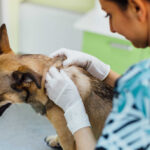 Crusty Scabs on Dogs: Top Causes and What To Do [Vet Advice] - Scabs serve as protective shields for injured skin, forming when skin is compromised, akin to a band-aid's role in human… [...]
Crusty Scabs on Dogs: Top Causes and What To Do [Vet Advice] - Scabs serve as protective shields for injured skin, forming when skin is compromised, akin to a band-aid's role in human… [...] Black Scabs on Dog: Top Reasons & What to Do - The majority of black scabs will be insignificant and pose no threat to your dog. However, some black scabs could… [...]
Black Scabs on Dog: Top Reasons & What to Do - The majority of black scabs will be insignificant and pose no threat to your dog. However, some black scabs could… [...]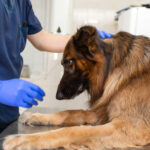 Scabs on Dog’s Head or Neck: Top Reasons [With Pictures] - Discovering scabs on your dog's body can be alarming, particularly when these scabs are on your dog's neck or head.… [...]
Scabs on Dog’s Head or Neck: Top Reasons [With Pictures] - Discovering scabs on your dog's body can be alarming, particularly when these scabs are on your dog's neck or head.… [...] Dog Nose Scabs and Lumps [Pictures & Vet Advice] - Dogs use their nose and sense of smell to explore the world around them. As most owners know, dogs will… [...]
Dog Nose Scabs and Lumps [Pictures & Vet Advice] - Dogs use their nose and sense of smell to explore the world around them. As most owners know, dogs will… [...]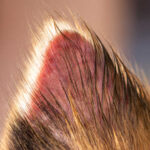 Dog Has Scabs On Ears: Top Causes & Vet Advice - In this article, our experienced veterinarian Dr. Chyrle Bonk walks you through common causes of scabs on a dog’s ears,… [...]
Dog Has Scabs On Ears: Top Causes & Vet Advice - In this article, our experienced veterinarian Dr. Chyrle Bonk walks you through common causes of scabs on a dog’s ears,… [...]Related posts about hair loss:
Disclaimer: This website's content is not a substitute for veterinary care. Always consult with your veterinarian for healthcare decisions. Read More.




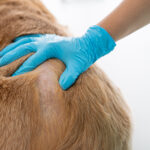
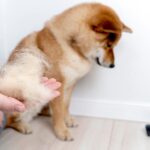
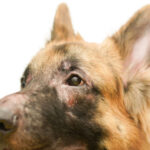
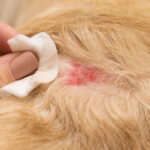
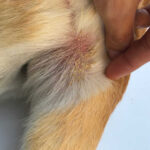
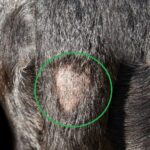
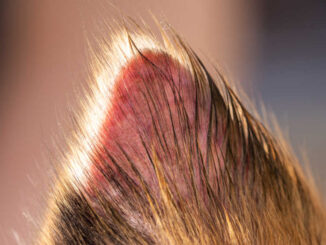
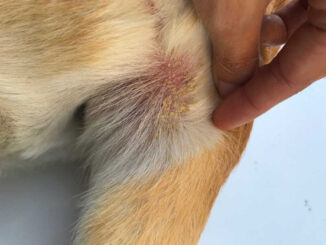
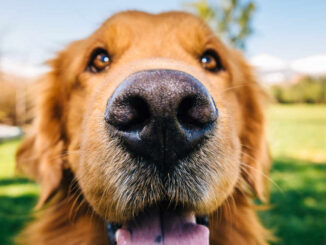
Be the first to comment